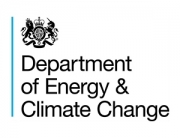On June 12th 2013, DEFRA released the new guidance on corporate greenhouse gas emissions. There are many emissions factor updates as expected. There are also a number of very positive changes to the DEFRA calculation methodologies which bring the DEFRA guidance more inline with international best practice.
The new guidance includes many changes to how emissions are reported going forward and historically. Specifically around electricity retrospectively updating the 5 year grid rolling average.
The main changes are as follows:
1. Removal of the 5 year grid rolling average
2. Removal of the combined electricity generation and transmission & distribution figures (formerly tables 3c and 10c)
3. Removal of the convention to retrospectively update conversion factors
4. Relocation of the indirect scope 3 “well to tank” factors
5. Introduction of the outside of scopes biogenic portion to diesel and petrol scope 1 factors from ‘average biofuel blend’
6. Issue of flight / air freight conversion factors including distance uplift and radiative forcing
7. Removal of the ‘all scopes’ factors
For existing ManageCO2 software users, you do not need to worry about these changes as the software handles these changes for you. Our account managers will be in touch to explain the implications for your organisation.

1. Removal of the 5 year grid rolling average
What and why?
The 5 year grid rolling average figures for electricity have been removed. All conversion factors are now based on a single average factor for a particular year. This will allow organisations to report using a factor representing the most current emissions estimation from the grid.
Using the 1 year average factor has a number of benefits, including a more immediate ability for organisations to report efficiencies achieved in national infrastructure, rather than this being dampened within a 5 year average. The 1 year average factor will however be more sensitive to energy mix changes on a year on year basis.
Implications
Previous reporting based on the 5 year grid rolling average factors will need to be rebaselined to reflect this change as there is a notable difference between the 5 year average figures (which capture historic, more carbon intense grid factors in an average over 5 years) and the 1 year average data set.
Failure to rebaseline will result in a large drop in emissions for the new reporting year compared to previous reporting years; this will result in false interpretation as an emissions reduction and inconsistent reporting.
How to rebaseline
To rebaseline each organisation should revisit their historic electricity data, remove the old 5 year average conversion factor and replace it with the newly stated 1 year average conversion factor applicable to the reporting year, recalculating their reported emissions total.
Organisations should restate their carbon footprint, across each relevant historic reporting period, including the base year, to compensate for this change and make future reporting comparable. Organisations should annotate the reason for restatement to ensure transparency for stakeholders. Such a statement might read, “Our carbon footprint has been restated for all years in order to account for material changes to the conversion factors provided by Defra for company reporting purposes”.
For further information on rebaselining please refer to Defra’s ‘Environmental reporting guidelines’, or the guidance provided by
‘WBCSD/ WRI GHG Protocol’.
2. Removal of the combined electricity generation and transmission & distribution figures (formerly tables 3c and 10c)
What and why?
‘Table 3c’ (which existed in the 2011 and 2012 editions of the conversion factors) has now been removed. ‘Table 3c’ contained values for ‘electricity consumption’ – these figures were the sum of ‘scope 2 electricity generation’ + ‘scope 3 losses through transmission and distribution’. Defra are no longer providing this combined scopes figure since it has widely been interpreted and misreported as a sole scope 2 figure.
Implications
For organisations that have been reporting their electricity using values from ‘table 3c’ (for UK electricity) or ‘table 10c’ (for overseas electricity) and placing these results in their scope 2 reporting, rebaselining shall be required to ensure comparability with historic reporting.
3. Removal of the convention to retrospectively update conversion factors
What and why?
Organisations are no longer expected to retrospectively update their calculations to reflect changes in the newest release of the conversion factors. It will still be the case that the majority of factors will be updated each year, but the historic time series factors (for example for electricity) will remain fixed after they have been published instead of changing each year. It has proved time consuming and burdensome for reporting organisations to continuously update all years’ calculations for each year’s new set of conversion factor releases.
Implications
The historic conversion factors published by Defra will no longer change with each new issuance of the conversion factors. A simplified, single set of conversion factors will be released for each new reporting year only. The only reason for users to make historic updates to conversion factors in their reporting after the 2013 convention comes into force will be to correct errors.
4. Relocation of the indirect scope 3 “well to tank” factors
What and why?
‘Well to tank (WTT)’ is the term used to describe the factors labelled as ‘scope 3, total indirect GHG’ in the 2012 and 2011 releases of the conversion factors. These factors enable organisations to account for the emissions associated with extracting, refining, and transportation of the raw fuel to the vehicle, asset or process under scrutiny.
Defra have identified significant confusion amongst users when identifying which scope three conversion factors to apply i.e. it is difficult to distinguish between scope 3 factors associated with the activity itself and the WTT factors describing the upstream impacts. To reduce this confusion the upstream WTT factors have been relocated into specific WTT listings for each activity type.
Defra have also received a high volume of requests to align the scope 3 factors with the ‘WRI Corporate Value Chain (Scope 3) Accounting and Reporting Standard’; removing the WTT factors to separate annexes assist the process of alignment.
5. Introduction of the outside of scopes biogenic portion to diesel and petrol scope 1 factors from ‘average biofuel blend’
What and why?
In the ‘fuels’ listing, ‘diesel (average biofuel blend)’ and ‘petrol (average biofuel blend)’ are the conversion factors organisations should use to report petrol and diesel bought at services stations. Both of these forecourt products contain a percentage of biofuel blended with the standard mineral oil fuel.
In order to fully account for the biofuel content in this fuel, organisations must report both the direct emissions from combustion of the fuel and the biogenic portion of this fuel.
Implications
The 2013 conversion factor release is the first year in which the biogenic conversion factors for forecourt fuel have been made available to organisations to ensure they fully report their emissions from blended forecourt fuel sources.
What to do
Organisations should report their ‘diesel (average biofuel blend)’ or ‘petrol (average biofuel blend)’ consumption as two separate line items in their reporting. For example for diesel; the scope 1 ‘diesel (average biofuel blend)’ factor should be multiplied by the litres of fuel used and reported as a scope 1 emission; as a separate item the litres of fuel used should also be multiplied by the diesel ‘forecourt fuels containing biofuel’ factor in the ‘outside of scopes’ listing and reported as per the below example.
6. Issue of flight / air freight conversion factors including distance uplift and radiative forcing
What and why?
Previously Defra’s conversion factors have not automatically included a distance uplift (this has been calculated in the conversion factor tool), or the influence of radiative forcing.
Since the calculation functionality has been removed from the conversion factor tool, these modified conversion factors have been stated rather than provided through use of formulae.
Implications
There are two different factor types presented in the new conversion factors:
1) Factors ‘Without RF’ – these include the distance uplift of 8% to compensate for planes not flying using the most direct route i.e. flying around international airspace, stacking etc
2) Factors ‘With RF’- these include both the 8% distance uplift and a 90% increase in the CO2 factor to account for radiative forcing (the influence of the other climate change effects of aviation (water vapour, contrails, NOx etc))
7. Removal of the ‘all scopes’ factors
What and why?
Defra have identified significant confusion amongst users of ‘all scopes’ factors. Reporting has been problematic since typically organisations report in scope-based tables, and transparency has been jeopardised.
Implications
Going forward users will need to report using factors that are specifically categorised in the 3 main scopes; scope 1, 2 and 3, (plus outside of scopes). Users may need to update historic reporting to ensure comparison is possible.
What to do
If historic comparison is not required: users do not need to change historic reporting, but appreciate that their reported impact going forward will be reported with two sets of conversion factors, one set of factors for the activity carried out (i.e. use of electricity, air travel etc), and one set for the WTT (well to tank) impact of that same activity. The activities may be reported across scopes 1,2,3 (or outside of scopes), whilst the WTT impact will always be reported in scope 3.
Note: the ‘all scopes’ factors have historically been the sum of the activity conversion factor and the WTT impact conversion factor
The detailed guidance document as published on June 12th can be downloaded here.









